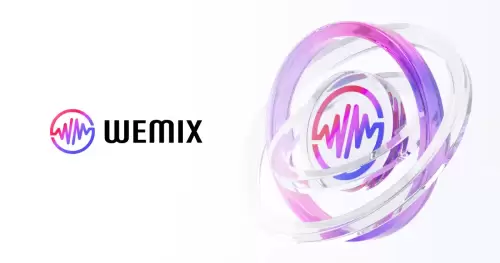 |
|
 |
|
 |
|
 |
|
 |
|
 |
|
 |
|
 |
|
 |
|
 |
|
 |
|
 |
|
 |
|
 |
|
 |
|
Cryptocurrency News Articles
Blockchain, DAG, and Scalability: A New Era of Crypto?
Jul 14, 2025 at 05:25 am
Exploring the evolving landscape of blockchain with DAGs, focusing on scalability, efficiency, and real-world applications. Is BlockDAG the next big thing?

The world of crypto is constantly evolving, and the need for speed and efficiency has never been greater. Blockchain technology, while revolutionary, is showing its age. Enter Directed Acyclic Graphs (DAGs), a promising alternative. Are DAGs the key to unlocking true scalability in the crypto space?
Blockchain's Bottleneck: The Scalability Challenge
Traditional blockchains, like Bitcoin and Ethereum, face significant limitations. High fees, congestion, and slow transaction confirmations are common pain points. The sequential nature of blocks creates a bottleneck, limiting the number of transactions that can be processed at any given time. This is where DAGs step in.
DAGs: A Parallel Processing Paradigm
Unlike blockchains, DAGs allow transactions to be processed in parallel. Data is stored as interconnected nodes across a graph, eliminating the need for traditional blocks. This architecture enables faster confirmations, greater throughput, and improved scalability. Early projects like IOTA and Kaspa paved the way, but newer platforms like BlockDAG are pushing the boundaries further.
BlockDAG: A Hybrid Approach
BlockDAG stands out by combining the DAG transaction structure with a Proof-of-Work consensus mechanism. This hybrid approach balances performance and security. Miners validate transactions, similar to Bitcoin, but instead of packing them into blocks, these transactions flow across a DAG network. This allows BlockDAG to maintain decentralization and permissionless access while significantly improving efficiency and speed.
Real-World Applications and Ecosystem Growth
The potential applications of DAG systems are vast, spanning retail payments, smart cities, IoT, and enterprise solutions. BlockDAG's ecosystem is already expanding, with a live public testnet supporting node creation, smart contract development, and dApp testing. The platform has also made strides in marketing, partnering with sports teams to reach wider audiences.
Tether's Strategic Shift
Even stablecoin giant Tether is recognizing the importance of scalability. The company plans to discontinue USDT redemptions and token issuance on older blockchains, focusing on faster, more scalable networks. This move highlights the industry's growing need for efficient and cost-effective solutions.
The Future of Crypto: Scalability is Key
The crypto landscape is rapidly changing, and projects that prioritize scalability are gaining traction. While Ethereum aims for enhanced scalability through Layer 2 solutions and upgrades, emerging platforms like BlockDAG offer alternative approaches. The race is on to build the infrastructure that can support mass adoption and real-world use cases.
A Personal Take: Is BlockDAG the Next Big Thing?
BlockDAG's innovative approach, combining DAGs with Proof-of-Work, is intriguing. The active testnet, user-friendly mining apps, and significant presale success suggest a strong foundation. However, it's important to remember that the crypto market is highly competitive, and execution is key. While it's too early to declare BlockDAG the next big thing, it's definitely a project to watch closely. For example, BlockDAG has raised over $337.5 million and sold more than 23.8 billion coins and has confirmed its listing on over 20 exchanges.
So, will DAGs dethrone blockchains? Only time will tell. But one thing is clear: the quest for scalability is driving innovation and shaping the future of crypto. Keep your eyes peeled, folks, because the next breakthrough could be just around the corner!
Disclaimer:info@kdj.com
The information provided is not trading advice. kdj.com does not assume any responsibility for any investments made based on the information provided in this article. Cryptocurrencies are highly volatile and it is highly recommended that you invest with caution after thorough research!
If you believe that the content used on this website infringes your copyright, please contact us immediately (info@kdj.com) and we will delete it promptly.




























































